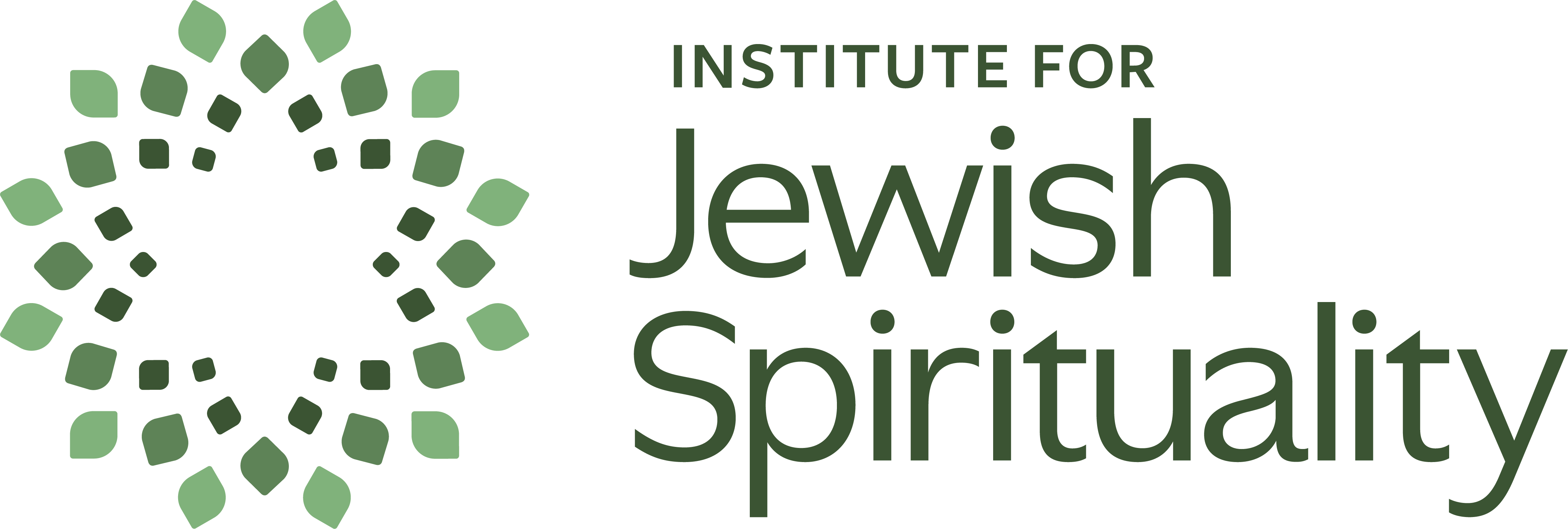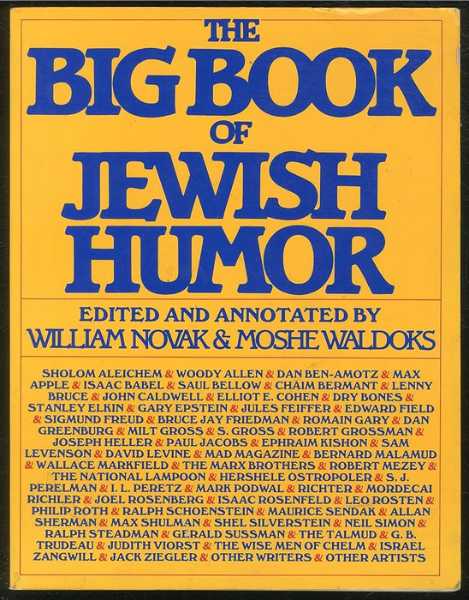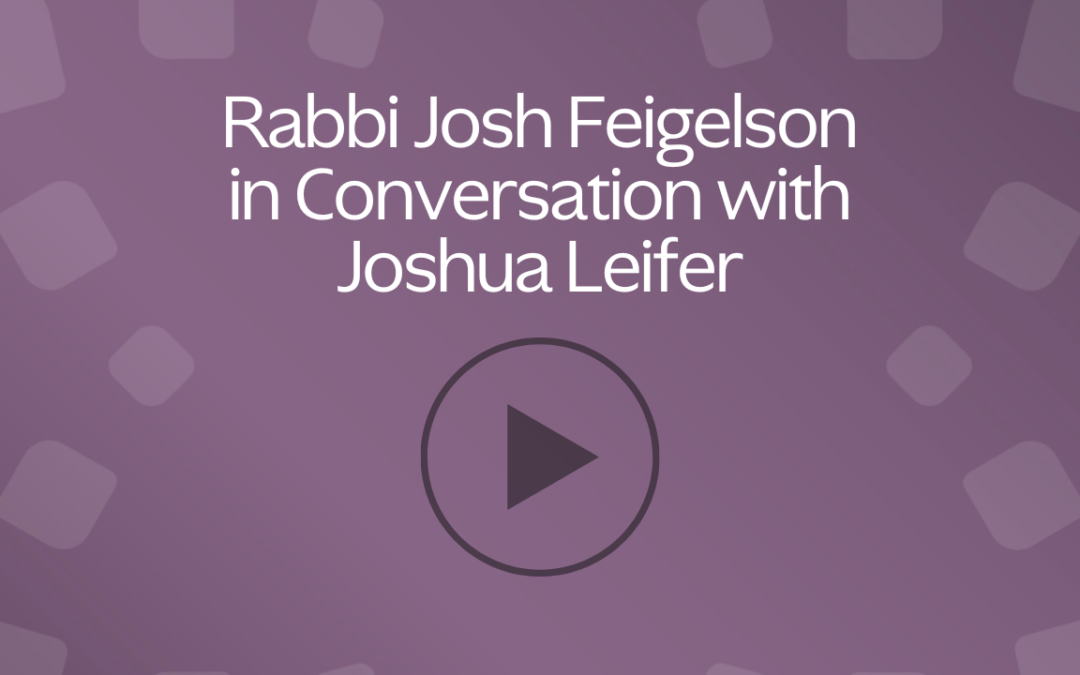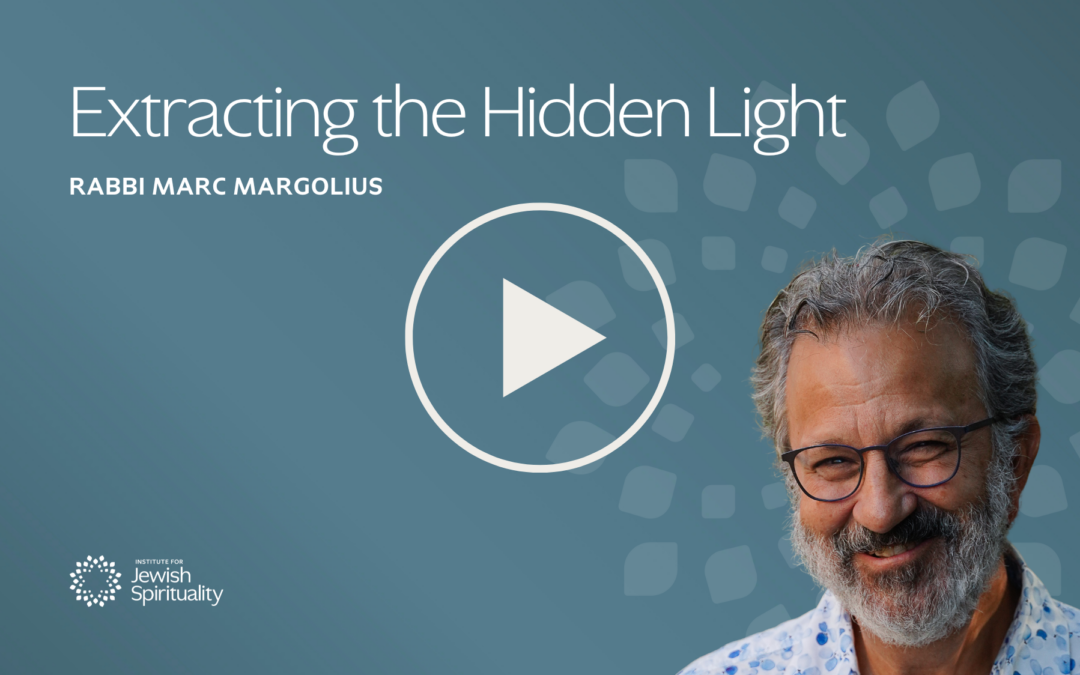
Dec 27, 2024 | Blog, Rabbi Josh Feigelson, PhD, President & CEO, Institute for Jewish Spirituality
Dear friends,
I heard from many people this week about The New York Times columnist David Brooks’s essay, “The Shock of Faith.” I won’t speak for him (he does that for himself in 2,000 words). Nor do I really want to have a conversation about whether Brooks, who talks about his Jewish life, is really a Christian at this point (he deals with that a bit in the essay). Instead, I want to respond to Brooks with gratitude, compassion, and an invitation.
Gratitude: I generally think we need more thoughtful discussion of religion and spirituality in American public life, so I’m grateful when someone writes a piece like this that prompts reflection and conversation. I’m grateful that Brooks discusses and centers, among other things, virtues like interconnection, compassion, justice, healing, and spiritual intimacy. I appreciate that he’s trying to open up some space for college-educated people (those of us with an “overly intellectual nature” — read: many American Jews) to consider how religion and spirituality might function in their own life. And I’m glad that his piece might introduce more people to wonderful contemporary thinkers and writers like Christian Wiman and Avivah Zornberg. Joseph Soloveitchik appearing on the Times Op-Ed page–even in a piece he might find problematic–is a good thing.
Compassion: My overriding thought on reading Brooks’s piece was something along the lines of, “I wonder what would happen if he came on a retreat with IJS.” Because so much of what Brooks describes in his piece sounds, to me at any rate, familiar: Someone raised in a Jewish home and in institutional Jewish life who didn’t find what he was looking for on a spiritual level and, eventually, sought it in other traditions. That was one of the primary motivations for creating IJS a quarter-century ago, to help seekers like Brooks find what they’re looking for in our own tradition–because, of course, we have these riches too, but they have often been obscured (there’s that “overly intellectual nature” again).
Brooks describes a literal mountaintop experience in which he was overcome by a sense of the Divine presence. Reaching for a Puritan prayer book in his backpack, he finds verses that speak to him. These included, “Let me learn by paradox that the way down is the way up”–which, for me, evoked the Hasidic concept of yeridah l’tzorech aliyah, a spiritual descent for the sake of ascent. Or another verse: “The broken heart is the healed heart,” which brought to mind the classic teaching of the Kotzker Rebbe, “There is nothing so whole as a broken heart.”
In the last section of his piece, Brooks identifies three “interrelated movements” of what he has come to understand as “faith”: Sanctification (in Hebrew: kedusha); Healing the world (tikkun olam); and Intimacy with God (devekut). He doesn’t use the Hebrew terms–and I wondered whether that was because he knew them but didn’t find them appropriate for this column, or that he didn’t know them. Over and over as I read his column, I found myself wondering if Brooks was aware that these same rich concepts exist in thick, rich Jewish language–that he could find many of the jewels he sought right in his own backyard. ‘
An example, from a text I taught at my local synagogue earlier this week: In his Sefat Emet (Genesis, for Hannukah 14:9), Rabbi Yehudah Leib Alter of Ger offers a provocative take on the Hannukah story. The Talmud, of course, teaches that we celebrate Hannukah because of the miracle of the oil that lasted for eight days. Yet the Sefat Emet points out that this hardly seems like the basis for establishing a holiday: After all, the Jews of the time weren’t actually under an obligation to light the menorah, seeing as they were unable to do so due to circumstances beyond their control. So why create a holiday to commemorate a miracle which enabled the performance of a mitzvah that they didn’t have to do in the first place?
He answers his own question: “The Holy One made miracles in order to raise the spirits of the children of Israel. As a result, they reaccepted anew the yoke of divine sovereignty, to joyfully be servants of YHVH. Thus by means of these miracles, they re-dedicated their Divine service–and that’s why the holiday is called Hannukah (i.e., ‘dedication’).”
When I taught this text this week, I found myself posing the question, “Why are you lighting Hannukah candles this year?” Because I think the Sefat Emet is challenging us. If we are only lighting the candles because “that’s what Jews do,” or some vague sense of rote obligation or commemoration of a distant historical event, then we’re not really doing it right. Instead, I would suggest the Sefat Emet is asking, even demanding of us, to try to tap into something far richer, far deeper: the miraculous, the holy, the “numinous” as Brooks calls it, that pervades the world, if only we slow down enough to attune ourselves to it.
That is the aim of our practice of Judaism, our dedication to a life of Torah. It is precisely to longingly, lovingly pursue communion with the Divine Presence, to make ourselves vessels for the Shekhinah. It’s to live out the verse from Psalms (42:3) that Brooks quotes, “As the deer pants for the water brooks, so my soul pants for Thee, O God” (which, by the way, is one of the standard songs we traditionally sing on Shabbat). Brooks quotes Christian Wiman: “Religion is not made of these moments [of sporadic awareness of the Divine Presence]; religion is the. means of making these moments part of your life rather than merely radical intrusions so foreign and perhaps even fearsome that you can’t even acknowledge their existence afterward.” Amen–he nailed it.
Which leads me to my invitation, which is extended to David Brooks and to anyone with whom his column resonated: These things you’re seeking are things we’ve been developing and teaching at IJS for decades, so please–come join us! The binary that Brooks posits, between spirituality on the one hand and religion on the other, is one we at IJS understand and, I think, subvert or upend on a daily basis. It is possible to be both spiritual and religious, to live (using the binaries Brooks quotes from Rabbi David Wolpe) simultaneously in touch with both emotion and obligation, soothing and mobilization, self-satisfaction and dissatisfaction with the world. That’s precisely what we try to do at IJS day in and day out.
Hannukah, perhaps more simply than any of our other holidays (it involves nothing more than lighting a candle in the darkness), provides us with an opportunity to attune ourselves to the Divine Presence in our lives and in the world. May all who are hurting find healing, may all who are feeling alone find communion, and may all who are seeking find inspiration in the lights of Hannukah this year.

Dec 20, 2024 | Blog, Rabbi Josh Feigelson, PhD, President & CEO, Institute for Jewish Spirituality
On Tuesday morning this week, I stood amidst the ruined homes of young members of Kibbutz Kfar Aza, one of the kibbutzim overrun and decimated by Hamas terrorists on October 7, 2023. These small apartments had provided a way for the kibbutz to help young people get their start in adult life. Their location, closest to the western fence of the kibbutz, made them the first line of attack. Along with the murders, there was evidence of rape, and the brutality of the home violation — bullet holes in walls, ransacked belongings — is still visible in plain sight, as the kibbutz members have not yet returned to their homes and decided what to do with this area: create a memorial, rebuild, or something else.
From the same spot on that fence in Kfar Aza, I could see the northern Gaza neighborhoods of Jabalya, Beit Lahiya, and Beit Hanoun. If you enter these areas in Google Maps to try to calculate the distance between them and Kfar Aza (I just did), you’ll get an unusual response: “Can’t find a way there.” These neighborhoods have been emptied since the Israeli military response after October 7, thousands of homes damaged and destroyed. Standing there on Tuesday morning, I could hear the constant hum of aerial drones along with occasional explosions.
This was my first visit to Israel since October 7. The visit was organized by The iCenter and included over 70 Jewish educators from around the world. It was a short and intense trip: four days of meeting with Israelis, hearing their stories, listening. We talked with teachers at Sha’ar HaNegev regional high school about the challenges of supporting and educating children who have suffered incredible trauma — even as they, the educators, dealt with their own. In Sderot we listened to Youssef Alziadna, a Bedouin Arab Israeli who drives a minibus and heroically saved 30 lives of young people — many of whom he has known since they were young children — at the Nova Festival. We talked with educators and families from Kiryat Shmona, in the north of Israel, who have been living in hotels for the last 14 months, unsure when they can go home.
That theme, home, was what seemed to keep coming up for me again and again. Visiting Kikar Hahatufim (Hostages Square) Wednesday morning in Tel Aviv, I felt myself at the epicenter of a campaign that has touched virtually every public space in the country: machzirim otam habayta achshav, Bring Them Home Now. The hostages need to come home. The soldiers need to be able to come home. The people of Kfar Aza and Kiryat Shmona and all the other hundreds of thousands of displaced Israelis need to be safe to come home — just like the people of Beit Hanoun and Jabalya and Beit Lahiya and throughout Gaza. Everyone — every human being — needs to be safe, needs to be able to come home.
I have been to Israel many times, and I’ve lived in the country for two-plus years of my life. Visiting Israel always raises enormous questions about home for me — as I expect it does for many Jews (as it should, I believe). There is an at-homeness I experience in Israel that is just unimaginable for me in America, and at various points in my life I’ve thought about whether and how Israel could really be home for me. That internal conversation is always complicated and hard. But this trip it was even more so, because so many more people are experiencing their own displacement, their own not-at-homeness — even in, especially in, a place they think of as home. (This was only accentuated by the air raid sirens that greeted us 20 minutes after our arrival in Tel Aviv and woke us at 2:30 a.m. on Thursday night.)
The story of Joseph and his brothers is many things, but it is certainly a story about the complexities of family and home. It prompts us to ask questions like, Whom do we treat as family, and what does it mean to do so? How do we create and sustain a shared home together? And, perhaps most acutely in the story of Joseph himself, what spiritual capacities might we be capable of nurturing in those moments when we are far from home: alone in a pit without water, working as a servant in the home of a foreigner, forgotten in a prison in Egypt (or a tunnel in Gaza)?
While I have always admired people who do so, it has not been my practice to kiss the mezuzah when entering and leaving a place. But Tuesday morning in Kfar Aza, entering the shelled out childhood home of our tour guide Orit, I found my right hand instinctively rising up to the mezuzah on the way in and out. Without really even thinking about it, my body seemed to be practicing a kind of mindful awareness: You are in a home, a Jewish home, be mindful. There were family pictures, puzzles that over the years had been completed and glued together and hung on the wall, artifacts of a family’s life through decades of children and grandchildren.
Perhaps my hand was prompting my mind to pray: May Orit’s family, may all these families on all these borders, return home from their exile. May they, may we, experience healing. May they, may we, be safe. May they, may we, return home now.
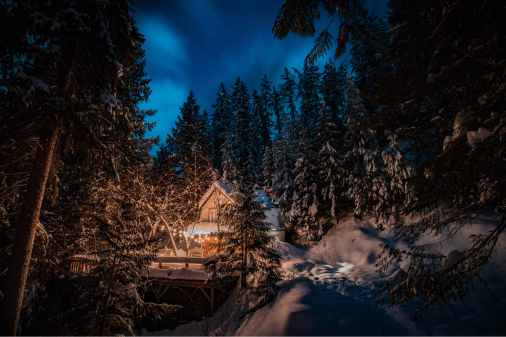
Dec 10, 2024 | Blog, by Rabbi Miriam Margles, Senior Core Faculty, Institute for Jewish Spirituality
At this time of year, where I live in Toronto, the trees have shed almost all of their leaves and their branches stand bare against the grey sky. Day by day, the hours of sunlight shorten while darkness holds on longer to the mornings and rolls in earlier and earlier in the evenings. Overhead, skeins of Canada geese honk their way south, and I almost take their leaving personally, abandoning me along with the snow and cold. With the loss of light and warmth, I find myself habitually focused on what I am losing, fighting against the changing season and its natural impact on me. When I face these outer and inner changes unmindfully, I fall into habits of either pushing myself to resist rest, forcing myself to be busy and social, or collapsing into fatigue as thoughts of loneliness and lack curl in next to me on the couch.
To respond to the depletion and sense of lack that many of us feel at this time of year, there are abundant Jewish teachings for Chanukah and the whole Hebrew month of Kislev about bringing light into the darkness. But I want to invite us to linger in this month’s long nights, to explore making ourselves spiritually at home in the darkness and to learn from its gifts.
Rebbe Nachman of Breslov, the great Hasidic sage of the late 18th century, teaches that the medicine for this season is a practice of sighing. He quotes the famous verse from Zekhariah (4:6), from the Haftarah we read on the Shabbat of Chanukah -“Not by might and not by power, ki im be’ruchi – but only by My ruach (spirit/ wind/ breath)”. The repair for what is lacking cannot be found through force or fighting. Instead, we consciously, gently, engage with ruach.
Rebbe Nachman explains that because everything that exists has come into being through Divine ruach, vital lifebreath, and because the secret of renewal lives in that same enlivening ruach, when there is lack, it is because there is a lack of ruach. Healing, therefore, needs an infusion of flowing, vitalizing ruach. While the winter earth becomes dormant and many animals hibernate, drawing their ruach inward until they are renewed in the spring, we humans, teaches Rebbe Nachman, can meet the lack or depletion of ruach within us with a conscious and soft flow of breath.
He teaches:
“See how precious is the sigh and groan {the krekhtz } of a Jewish person. It provides wholeness [in place] of the lack…And sighing is the extension of the breath. It corresponds to erekh apayim (patience)—i.e., extended ruach. Therefore, when a person sighs over the lack and extends their ruach, they draw ruach-of-life to that which they are lacking… Therefore, through the sigh, the lack is made whole” (Likutei Moharan, Torah 8:1).
We might think that the practice that is called for in response to the lack of light and lows of this season would be to generate strong and powerful breath, bracing against the cold, or quick and activating breath to overcome the darkness and our impulses to collapse under the covers. But the quality of ruach that we nurture in the month of Kislev, preparing for Chanukah, needs to be distinct – different from the fresh aliveness of spring or the luscious vitality of summer. For this time of year, Rebbe Nachman prescribes long, extended ruach-of-life breaths that share the qualities of the darkness outside – slow, heavy, spilling and spacious with soft and blurred boundaries. Between the poles of fighting and collapsing, we access this clear and gentle ruach-aliveness.
Let yourself sigh a few times. Notice what the release feels like in your body. Feel how air tumbles out of your body, uncontrolled, unmeasured. The chest softens and falls, in and down. With the palms of your hands resting heavily against your chest, a sigh can partner with gravity to move stagnant ruach out of your body. Sighing is assisted by an open mouth and open throat so the fluff and flow of breath can pour out, unhindered.
And of course, each sigh is fed by the inhalation that fills the body before and after it. The deeper and fuller the inhalation, the more fluid and restorative the sigh can become. Instead of pulling the next breath in, you can allow your belly to expand softly, patiently, allowing fresh air to fill and expand your lungs, to widen your ribcage, to let your mouth fall open, expanding from the inside out, becoming more available to release the next sigh. As you continue this sighing practice (and as some yawning might unfurl with the same qualities of soft expansion, quieting and release), you might notice a gentle increase of energy that is restful and warm but not sleepy or forced.
You can let your vocal cords vibrate so that some sound rides on the flow of breath, just enough to give voice to what is felt within – sadness or ache, relief or pleasure. Rather than opening into big emotional catharsis, this is a practice of permission and presence so that feeling can move through us, supported and comforted by the movement of air through our whole bodies. With each holy sigh, ruach and emotion roll from the dark cave within to the darkness that surrounds. And from the darkness outside, enlivening ruach expands and fills the dark and wondrous galaxies within. Tehom el tehom koreh – Deep calls to deep (Psalm 42:8).
Just as the small, flickering Chanukah candles enable us to be present with the stretch of night outside our windows, the practice of sighing embodies spiritual wisdom gleaned from the darkness. It doesn’t alter the weather or the slant of the sun but it fosters a sense of wholeness within us, breath by divine breath, so that we are increasingly at home in the darkness, lacking nothing.

